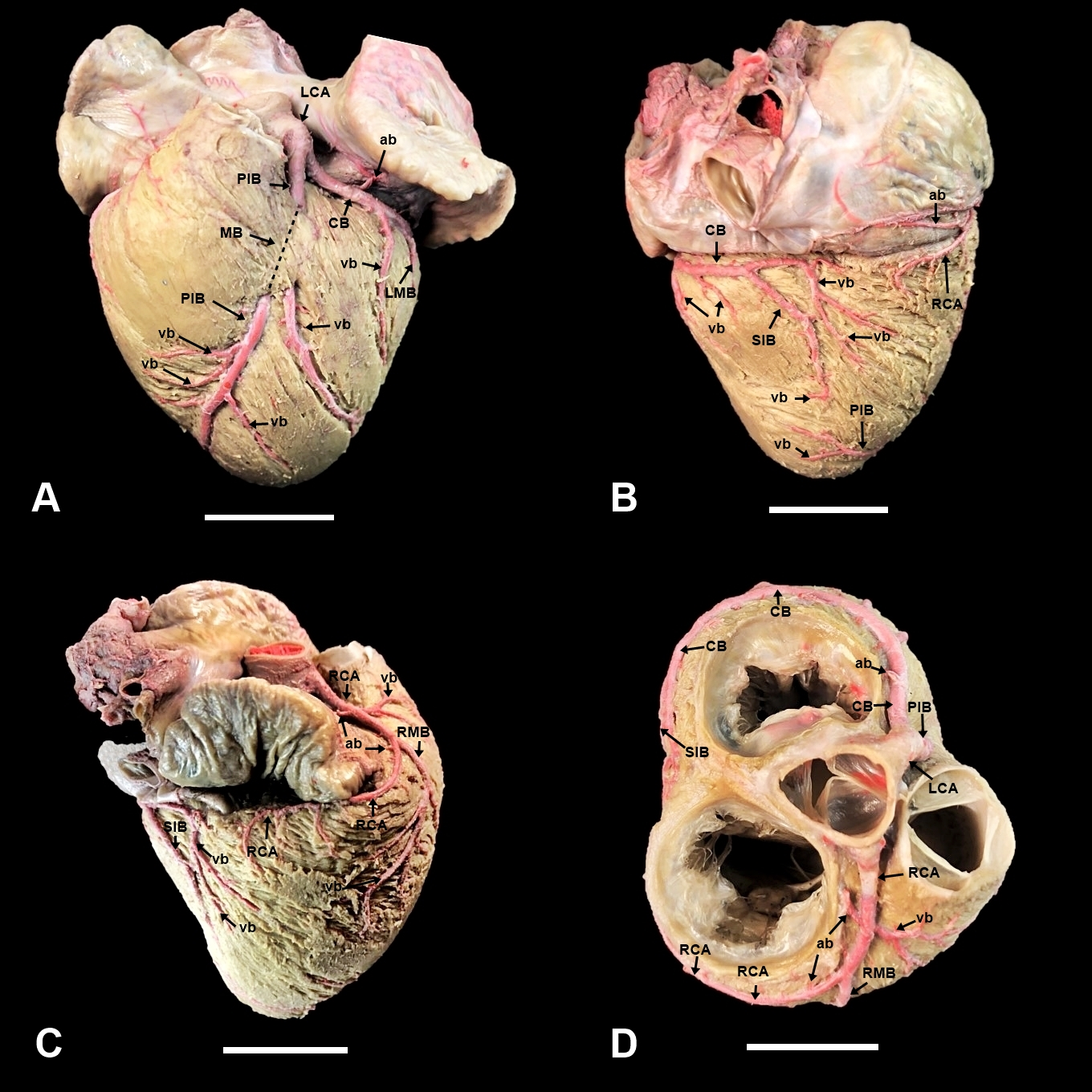Angioarchitecture of the coronary arteries in Mazama gouazoubira (G. Fischer, 1814)
DOI:
https://doi.org/10.21708/avb.2021.15.4.10007Abstract
Mazama gouazoubira is a widely distributed deer in the South American continent. However, studies on its anatomical characteristics are still scarce. The objective of this study was to elucidate the coronary circulation of M. gouazoubira. With this aim, after collecting cadavers on highways, twenty-four hearts injected with latex and preserved in formaldehyde at 10% were dissected. The dissections revealed that all specimens presented left coronary dominance, characterized by the origin of the subsinuous interventricular branch from the circumflex branch of the left coronary artery. The number of ventricular branches originated from branches of the left coronary artery was approximately five times higher than that of the right coronary artery. The occurrence of myocardial bridges was registered in 91.7% of the individuals, with bridges predominating over the paraconal interventricular branch. The mean length of the paraconal interventricular sulcus was significantly higher in males (p = 0.02). The number of atrial branches and ventricular branches, length of myocardial bridges and length of subsinuous interventricular sulcus did not vary significantly between sex. Left coronary dominance and high frequency of myocardial bridges in M. gouazoubira are preponderant anatomical traits also present in different species of Ruminantia suborder. Coronary dominance studies in other South American deer species may confirm the correlation of this trait with the evolutionary history of these animals.
Downloads

Downloads
Pubblicato
Fascicolo
Sezione
Licenza
Autores que publicam na Acta Veterinaria Brasilica concordam com os seguintes termos: a) Autores mantém os direitos autorais e concedem à revista o direito de primeira publicação, com o trabalho simultaneamente licenciado sob a Licença Creative Commons Attribution que permite o compartilhamento do trabalho com reconhecimento da autoria e publicação inicial nesta revista. b) Autores têm autorização para assumir contratos adicionais separadamente, para distribuição não-exclusiva da versão do trabalho publicada nesta revista (ex.: publicar em repositório institucional ou como capítulo de livro), com reconhecimento de autoria e publicação inicial nesta revista. c) Autores têm permissão e são estimulados a publicar e distribuir seu trabalho online (ex.: em repositórios institucionais ou na sua página pessoal) a qualquer ponto antes ou durante o processo editorial, já que isso pode gerar alterações produtivas, bem como aumentar o impacto e a citação do trabalho publicado (Veja O Efeito do Acesso Livre).


 Esta obra está licenciada com uma Licença
Esta obra está licenciada com uma Licença 